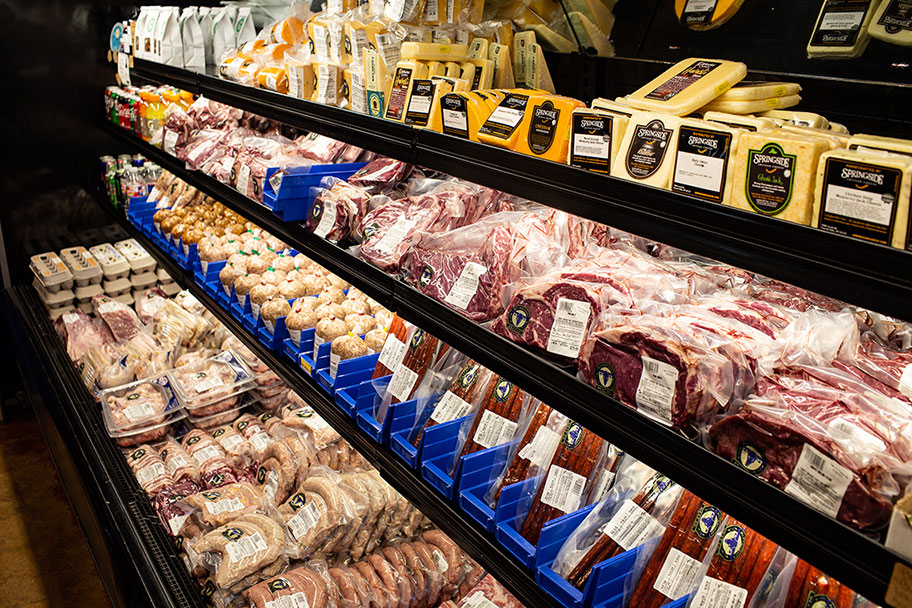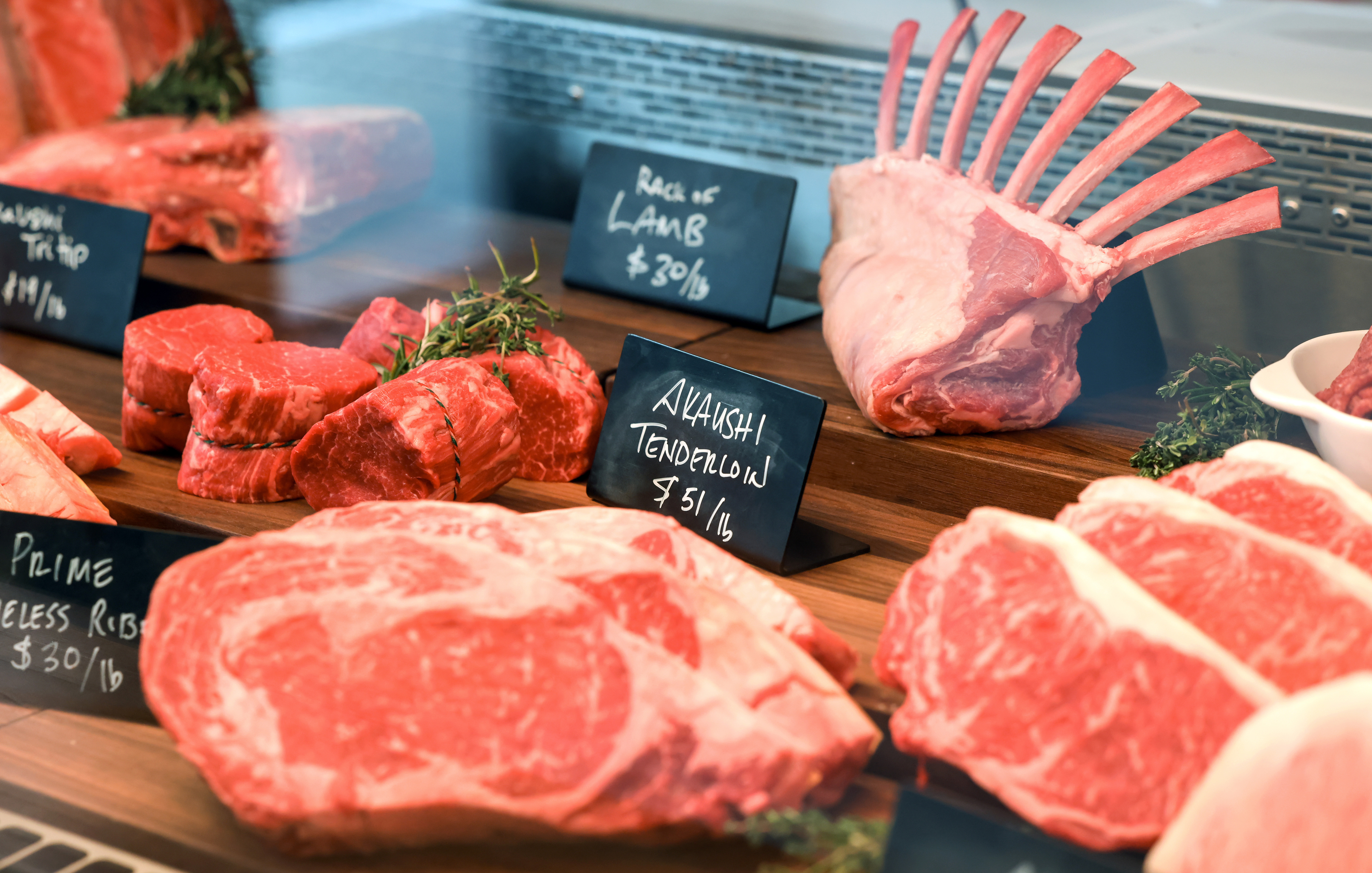Bagley Farms Meat Market Edwardsville IL: Your Go-To Location for Regional Meat Selection
Bagley Farms Meat Market Edwardsville IL: Your Go-To Location for Regional Meat Selection
Blog Article
Reveal the Art of the Butcher's Cut in a Modern Meat Market
In the ever-evolving landscape of modern-day meat markets, the butcher's cut has actually transcended its traditional roots, combining age-old workmanship with contemporary practices. bagley farms meat market edwardsville il. Today's butchers are not merely cpus of meat; they are well-informed craftsmens that stress sustainability and honest sourcing. Their proficiency in choose and preparing cuts tailored to details cooking demands uses an unmatched eating experience. Yet, what absolutely establishes the modern butcher apart is their ability to create a deeper connection between customers and the beginnings of their meat. How do these masters balance custom with development, and what effects does this have for the future of meat consumption?
Development of Butchery Strategies

The mid-20th century saw butchery methods better improved by clinical understandings into muscle biology and meat aging, boosting both tenderness and preference. Technologies like vacuum cleaner product packaging and refrigeration expanded item shelf-life, permitting butchers to expand offerings and enhance quality assurance. This duration also marked the increase of specialized tools, such as band saws and meat slicers, which raised precision and performance in meat handling.
Computerized systems now assist in monitoring pet provenance and optimizing cuts to satisfy specific consumer preferences. Additionally, a revival in artisanal butchery has actually arised, blending standard skills with modern-day understanding to cater to customers looking for honest and sustainable meat alternatives.

Recognizing Meat Cuts

Recognizing the complexities of meat cuts is essential for both butchers and consumers looking for high quality and value. Each cut originates from a different part of the animal, giving distinct flavors, appearances, and cooking techniques. Proficiency of these distinctions not just enhances cooking experiences but likewise optimizes the energy of each carcass. For butchers, specific cuts show skill and regard for the craft, ensuring minimal waste and ideal return.
The key groups of meat cuts include primitive, sub-primal, and retail cuts. Butchers then damage these down better into sub-primal cuts, before finally producing retail cuts readily available to customers, like ribeye or tenderloin.
Recognizing muscular tissue make-up is crucial; muscular tissues used much more often by the pet often tend to be tougher and are best fit for slow-moving cooking methods, while less-used muscular tissues, like those found in the loin, are extra tender and ideal for grilling or roasting. Knowledge with these distinctions encourages customers to make educated options, enhancing their culinary undertakings.
Choosing Top Quality Meat
Choosing the best meat entails more than just picking an aesthetically attractive item from the screen. The art of selecting quality meat calls for a discerning eye and understanding of details qualities that represent freshness and quality. Firstly, take notice of the shade; beef needs to have an intense, cherry-red shade, while lamb should show a soft pink tone, and pork a pale pink. This suggests the meat is fresh and hasn't been revealed to oxygen for too lengthy.
Second of all, take into consideration the marbling, which refers to the white streaks of fat within the muscle mass. Proper marbling is an essential indicator of tenderness and flavor, as it melts throughout food preparation, boosting the meat's juiciness. Remember, greater marbling frequently correlates with superior top quality cuts, such as USDA Prime.
Structure is one more vital variable; meat needs to really feel firm to the touch, not slimed or overly soft. In addition, bear in mind the aroma. Fresh meat needs to have a clean, neutral scent, without any sour or repulsive smells.
Pairing Cuts With Food Preparation Approaches
Effectively coupling cuts of meat with the proper food preparation approaches is crucial for attaining optimum flavor and texture. These methods improve the meat's all-natural tastes and ensure a juicy surface.
Conversely, harder cuts like brisket and chuck roast are rich in collagen, which breaks down right into gelatin when cooked gradually. These cuts are optimal for braising or sluggish roasting, enabling this hyperlink the meat to tenderize over time and establish deep, complicated tastes. Cuts such as short ribs and pork shoulder fare well with slow-cooking techniques, where expanded cooking times transform their durable textures into delicious meals.
Lamb shanks and oxtail, which need extended food preparation to soften, are excellent candidates for cooking or slow-moving simmering. These approaches coax out abundant, hearty flavors while my link preserving moisture. By recognizing the unique attributes of each cut, chefs and home chefs alike can elevate their cooking creations, guaranteeing each recipe is both satisfying and memorable.
The Butcher's Duty Today
Navigating the progressing landscape of the modern meat market, the butcher's function today extends beyond mere prep work of cuts. Contemporary butchers are culinary artisans, teachers, and advocates for lasting practices.
Along with crafting specific cuts, butchers currently involve directly with clients, supplying cooking recommendations and tailoring choices to match specific needs and preferences. Their experience in meat aging, marbling, and taste profiles empowers customers to make enlightened decisions, enhancing their culinary experiences. This customized service exhibits the butcher's developing role as a trusted expert in the kitchen.
In addition, butchers are pivotal in reducing waste, making use of whole animals to create varied products such as sausages and supplies - bagley farms meat market edwardsville il. This comprehensive method not only values the pet yet likewise straightens with modern sustainability objectives. In this means, the contemporary butcher personifies both custom and innovation, adapting to an ever-changing market while maintaining the artistry and honesty of their craft

Verdict
The contemporary butcher's craft delicately weaves conventional techniques with modern-day developments, emphasizing sustainable practices and ethical sourcing. Proficiency in recognizing diverse meat cuts and this high quality indicators empowers butchers to give informed recommendations, straightening details cuts with ideal food preparation techniques. This knowledge not only boosts culinary experiences yet additionally reinforces the connection in between customers and the beginnings of their food. By honoring historic practices while embracing contemporary needs, the butcher's function continues to be crucial in today's advanced meat market.
Report this page